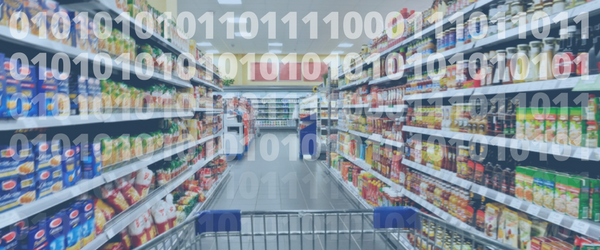posted on Dec 13, 2017 by Ivan Kotzev

I recently attended HGS’ forum on the trends and challenges in CX for the European Consumer Packaged Goods (FMCG) market. In the company’s West London center, clients and prospects including Colgate, Danone, L’Oréal, Nespresso, Nomad Foods, and Mars discussed the ways customer service can drive ecommerce and augment sales.
Digital as a force for disruption and opportunity in CPG CX
As with other sectors, the CPG market is disrupted by digital economy newcomers using direct-to-consumer models via ecommerce. Added to a stagnant mass market, decreasing customer loyalty, and hybrid shopping, this environment increases the importance of good customer experience. HGS’ Lauren Kindzierski, VP of Solutions and Capabilities, highlighted several approaches to enable digital customer experience, which the company has implemented across different verticals:
- Activate proactive chat to counteract abandoned shopping carts
- Roll out mobile chat to increase accessibility
- Launch self-service resources to minimize costs and improve the customer support journey
- Use SMS notifications for immediate gratification
- Build predictive analytical models on chat to segment customers.
A best practice for the company has been to ringfence the launch of a digital channel around a single brand to optimize the processes and technology.
CPG companies are also moving along this digital roadmap, with examples such as Nespresso’s own mobile app which allows users to buy coffee capsules, machines, and accessories on the go; or Nomad Foods, which began by fixing its knowledge base before trying self-service, and is currently trialing webchat in the Swedish market.
CPG’s distinctive challenges with digital CX
In addition to the typical riddles of evolving customer preferences and rapid technological life cycles, CPG manufacturers have industry-specific challenges with the adoption of digitally focused CX. For example, the competition for digital placement, including from vertically integrated brands, can limit product visibility and even narrow online shopping lists to selected brands. At the same time, CPG companies must balance their relationships with retailers and the opportunities for direct sales.
Another aspect is ownership of the online customer experience on retailers such as Amazon, where customer issues can stem from products and service. A solution is for companies to use a tool such as Bazaarvoice to analyze reviews. A different set of challenges come from shared product control within the organization, with marketing and product development departments often not tapping into the insights accumulated in the customer service functions, whether inhouse or outsourced. In HGS’ practice, a great approach is to have the customer care team visit the manufacturing plants and share feedback with the engineers firsthand.
Enabling digital channels for Danone and L’Oréal
In 2016, HGS began supporting L’Oréal from its London office, providing customer care for L’Oréal brands for the U.K. and Ireland markets over mail, phone, webchat, email, and social media, where it listens, moderates and responds to users. Over the last two years, the client has gradually shifted ~33% of all interactions to chat, which has higher CSAT compared to voice. By implementing a feedback loop for updates of the website with insights captured in the contact center, the client lowered the complaints rate from 51% to 39%. On social media such as Twitter, Facebook, Instagram, and YouTube, HGS supports 14 L’Oréal brands ranging from ones centered on a teenage demographic to the premium segment. Immediate benefits of the channel are extended hours of operation, and more proactive management, with efforts now focusing on social network influencers.
Another example of the use of digital channels for CPG companies is Danone. HGS has been supporting Danone since 2014 in the U.K. and Ireland, providing customer care, level 1 and 2 technical support, and social media services. Based out of the London center and also with work at home agents, the program supports expecting and new parents with early life nutrition consulting on a 24/7, 365 basis. The team of midwives, a healthcare practitioner, nutritionists, and counselors with experience in child care and first aid cover multiple channels, including phone, proactive and inbound chat, email, and WhatsApp. A separate quality management team ensures the program is compliant with WHO regulations and with the brand’s own requirements for data control and marketing communications management.
The decision to enable WhatsApp came after marketing research with mothers identified it as a relevant channel across all demographics. In July 2016, HGS launched the channel, and within the first hour registered the first five chats. The service is set up to allow users to add Danone’s contact number and initiate the chat sessions. Users can also push images and videos to the agent and, due to the asynchronous nature, can stop and continue the session over time. WhatsApp volumes have already exceeded those of live chat, with lower AHT compared to webchat.
Advancing on the digital journey
For L’Oréal in 2018, HGS is looking to continue to increase its social media teams, is already piloting Sprinklr as the new social media platform, and is building upon the self-service capabilities. Together with the client, HGS is identifying processes suitable for the implementation of chatbots. The company did a trial in 2017 with a hair dye product line, with a chat avatar advising users on color choice. It is also looking to expand live agent support into social messaging. A major question here is between launching with WhatsApp or Facebook Messenger, with the latter already used by the client in France.
For Danone, HGS has recently switched its platform for WhatsApp, with improved reporting and contact management, and is now planning to pilot video conferencing to act as a triage service for healthcare inquiries. Another pilot is underway to replace mailed paper vouchers with e-vouchers.

